
Zambia
( 1 user review )Zambia is in Central Africa. Roughly the size of Texas or France, Zambia is a landlocked country, bordered by Tanzania to the northeast, Malawi to the east, Mozambique to the southeast, Zimbabwe and Botswana to the south, a narrow strip of Namibia known as the Caprivi Strip to the southwest, Angola to the west, and the Democratic Republic of the Congo to the northwest.
Understand
Zambia offers travelers some of the world's best safari opportunities, a glimpse into "real Africa," and Victoria Falls, one of the World's Seven Natural Wonders and a UNESCO World Heritage Site.
History
The territory of Northern Rhodesia was administered by the South Africa Company from 1891 until it was taken over by the UK in 1923. During the 1920s and 1930s, advances in mining spurred development and immigration. The name was changed to Zambia upon independence in 1964. In the 1970s, 1980s and 1990s, declining copper prices, one party democracy and a prolonged drought hurt the economy. Elections in 1991 brought an end to one-party rule, but the subsequent vote in 1996 saw blatant harassment of opposition parties. The election in 2001 was marked by administrative problems with at least two parties filing legal petitions challenging the results. Opposition parties currently hold a majority of seats in the National Assembly.
Economy
Much of Zambia remains desperately poor, with GDP per capita on the order of US$600/year, and the bulk of Zambia's population lives on subsistence agriculture. The economy continues to revolve around copper, but after decades of mismanagement the industry is now doing better thanks to higher commodity prices and investments made after privatization. Another recent success story has been tourism, with the misfortunes of its neighbor Zimbabwe driving tourists to the northern side of the Victoria Falls and Zambia's safaris, but the fast growth has come from a low base.
People
As can be seen even from the bizarre squashed-peanut shape of the country, Zambia is one of the stranger legacies of colonialism, agglomerating a large number of different tribes (73, according to the official count) and languages (20, plus dialects). Fortunately, with a long history of coexistence, significant migration around the country and similar Bantu-family languages, they all seem to get along pretty well and Zambia has been spared the violent intertribal strife that has decimated countries like Rwanda.
The Bemba are the largest group in Zambia, but they still form only about 20% of the population. The Bemba came from the Congo in the 16th century, and while their homelands are in the north and center of the country, many have immigrated to Lusaka and the Copperbelt.
The Chewa, Ngoni and Nsenga tribes, all found in the east of the country, share the Nyanja language and form Zambia's second largest grouping with about 15%.
The Tonga, Ila and Lenje, known together as the Bantu Botatwe (Three Peoples), are a close runner-up with 15% of the population, concentrated in the west of the country in the Zambezi Valley and the plateaus to the north.
The Lozi in the far west (6%) are known for their craftwork, particularly basketry, and for a low-key (non-violent) secessionist movement calling for an independendent Barotseland.
Other tribes in Zambia's patchwork include the Lala and Bisa (5%), the Kaonde (3%), the Mambwe and Lungu (3%), the Lunda (3%), the Lamba (2.5%) and the Luvale (2%), and 57 more. Despair not: the differences are not crucial for travelers, and locals will be happy to explain their traditions when needed, notably at festivals.
White Africans of English or Afrikaner descent(1.2%) are also visible, particularly in the more upscale areas of the major cities.
Festivals
A highlight of any trip to Zambia is a visit to any of the many traditional festivals held throughout the country. Planning ahead can be tough though, as schedules are variable and not all are held yearly. Also, if you do manage to attend, bring along tolerance for heat, dust and crowds (increasingly drunk as the evening wears on) and patience for endless speeches by local functionaries like the Assistent Vice-Secretary for Fertilizer Co-operatives in Rutungu Sub-Province. On the plus side, any foreigners attending can usually sneak into the VIP stands, although you may get hassled for photo permits.
-
Kazanga, Kaoma [Central Western Zambia] (June - August). The Kazanga ceremony is considered Zambia's oldest traditional ceremony having been celebrated by the Nkoya people for over 500 years. The ceremony celebrates and maintains Nkoya traditions of music, dance and many other ancient practices.
-
Kuomboka, Lealui/Limulunga (Western Province, around Easter (March-April). The most famous of Zambia's festivals, this is the ceremonial migration of the Lozi king (litunga) from his dry season abode at Lealui to his wet season palace at Limulunga. Wearing an elaborate Victorian ambassador's costume, the litunga is taken by a flotilla of barges down the river, with musical accompaniment and, of course, much feasting at the destination.
-
Ncwala, near Chipata, 24 February. A Ngoni festival to celebrate the first fruit of the season, where the Ngoni chief ceremonially tastes the fruit of the land, then spears a bull and drinks its blood.
-
Kulamba, near Chipata, August. A Chewa thanksgiving festival known for its Nyau secret society dancers.
-
'''Likumbi Lya Mize (August) This is a popular August festival(The Day of Mize). This ceremony takes place at Mize, the official palace of Senior Chief Ndungu, about seven kilometres west of Zambez Boma. People of the Luvale tribe gather to celebrate their cultural heritage , bringing displays of all types of handicrafts and spicing the event with traditional singing and dancing while the chief holds court. Mize is the official palace of Senior Chief Ndungu. The Makishi dancers recreate famous events from Luvale mythology, and local artists display their work.
-
Livingstone Cultural & Arts Festival This was first held in 1994, this festival bring the traditional rulers from all the provinces of Zambia and visitors are also allowed with the knowledge of their culture in their tribe. This festival capture musicians, artist, poets, and dramatist.
-
Shimunenga is a ceremony to show devotion to ancestors. The ceremony takes place on a full moon on weekends in September and October. The Ba-lla tribe celebrate this ceremony at Malla on the Kafue Flats.
-
Umutomboko ceremony of the Lunda people in Luapula Province is held at Mwansabombwe to depict the coming to Zambia by the Lunda and Luba people from Kola in now Congo DR.The ceremony is held in July and is graced by Mwata Kazembe who performs a dance to commemorate the occasion.
Climate
If you look at a map, Zambia appears to be squarely in the tropics, but thanks to its landlocked and elevated position it does have distinct seasons that run as follows:
-
Dry season — May to August. The coolest time of the year, with temperatures 24-28°C during the day, can drop as low as 7°C at night. Probably the best time of year to visit Zambia: come early in the dry season for birdwatching or to see Vic Falls at their biggest, or later when the bush has dried up for good game-spotting on safari.
-
Hot season — September to November. Temperatures rocket up to a scorching 38-42°C and clouds of swirling dust make driving on dirt roads an asthmatic's nightmare. If you can take the heat, though, it's a good time for safaris as wildlife clusters around the few remaining watering holes.
-
Wet season — December to April. Temperatures cool down to 32°C or so and, true to the name, there is a lot of rain — sometimes just an hour or two, sometimes for days on end. Unsealed roads become impassable muddy nightmares, and many safari lodges close.
All temperatures above are given for the lowland valleys that house most of Zambia's population and national parks. If you're heading up to the plateaus, temperatures will be around 5°C lower.
History
The territory of Northern Rhodesia was administered by the South Africa Company from 1891 until it was taken over by the UK in 1923. During the 1920s and 1930s, advances in mining spurred development and immigration. The name was changed to Zambia upon independence in 1964. In the 1970s, 1980s and 1990s, declining copper prices, one party democracy and a prolonged drought hurt the economy. Elections in 1991 brought an end to one-party rule, but the subsequent vote in 1996 saw blatant harassment of opposition parties. The election in 2001 was marked by administrative problems with at least two parties filing legal petitions challenging the results. Opposition parties currently hold a majority of seats in the National Assembly.
Climate
If you look at a map, Zambia appears to be squarely in the tropics, but thanks to its landlocked and elevated position it does have distinct seasons that run as follows:
-
Dry season — May to August. The coolest time of the year, with temperatures 24-28°C during the day, can drop as low as 7°C at night. Probably the best time of year to visit Zambia: come early in the dry season for birdwatching or to see Vic Falls at their biggest, or later when the bush has dried up for good game-spotting on safari.
-
Hot season — September to November. Temperatures rocket up to a scorching 38-42°C and clouds of swirling dust make driving on dirt roads an asthmatic's nightmare. If you can take the heat, though, it's a good time for safaris as wildlife clusters around the few remaining watering holes.
-
Wet season — December to April. Temperatures cool down to 32°C or so and, true to the name, there is a lot of rain — sometimes just an hour or two, sometimes for days on end. Unsealed roads become impassable muddy nightmares, and many safari lodges close.
All temperatures above are given for the lowland valleys that house most of Zambia's population and national parks. If you're heading up to the plateaus, temperatures will be around 5°C lower.
Regions
-
North-Western Province
-
Copperbelt Province
-
Western Province
-
Southern Province
-
Central Province
-
Eastern Province
-
Northern Province
-
Luapula Province
-
Lusaka Province
-
Kafue Province
Other destinations
-
Victoria Falls — one of the world's largest waterfalls
-
Blue Lagoon National Park
-
Isangano National Park
-
Kafue National Park
-
Kasanka National Park
-
Lavushi Manda National Park
-
Liuwa Plains National Park
-
Lochinvar National Park
-
Lower Zambezi National Park
-
Luambe National Park
-
Mafinga Hills
-
Mosi-oa-Tunya National Park
-
Nsumbu National Park
-
North Luangwa National Park
-
Nyika National Park
-
South Luangwa National Park — one of Africa's great safari destinations
-
Sioma Ngwezi National Park
-
West Lunga National Park See also: African National Parks
Getting there
Visas
Zambian visa policy is best summarized as confusing: there is a bewildering thicket of rules on who needs visas, whether they can get them on arrival and how much they pay, and local border posts also apply their own interpretations. Due to recent political turbulence in Zimbabwe, Zambia has been cashing in on its unexpected boon in the tourism industry, with visa fees hiked and the previous visa waiver program canceled: you're now expected to pay in cash on arrival at the immigration kiosks.
The upside is that once they've figured out what category you're in, actually obtaining the visa is rarely a problem and a rule of thumb is that most Western visitors could get visas on arrival. Visa-free entry is possible for some nationalities including Ireland, Zimbabwe and South Africa. See the immigration department's web-site for the full list of visa-exempt nationalities. Current visa prices are US$50 for a single-entry and US$80 for a multiple-entry visa for all nationalities and is valid for 3 months; US passport holders can only apply for a multiple-entry visa, but it is then valid for 3 years.
-
A day entry visa is available to all nationalities at US$10, valid 24 hours
-
Transit visas carry the same cost as a single entry visa, valid 7 days
Do check with the nearest Zambian embassy for the latest information; the Zambian Embassy to the US has some information on their homepage , and getting the visa before arrival will reduce the uncertainty factor.
By plane
Zambia's main international gateway is Lusaka, which has direct flights to London on British Airways and good regional connections. For access to the eastern parts of the country (eg. Chipata), it will be faster to fly into Lilongwe in neighboring Malawi, and cross the border (which is quite straightforward by African standards). Also, Livingstone, near spectacular Victoria Falls, and Mfuwe, near South Luangwa National Park, have small international airports serving regional destinations.
By train
TAZARA trains run between Kapiri Mposhi, Zambia, and Dar es Salaam, Tanzania, on Tuesdays and Thursdays. According to the schedule the trip takes 38 hours, but these trains break down regularly. If you are on a tight schedule, a train might not be your best option. On the other hand, a train ride between Dar es Salaam and Zambia is a beautiful way to see the countryside at a reasonable price (about $55 for a first class sleeper and $40 for second).
Several important things to note about this trip, however:
-
Bring water.
-
Immigration officials stamp passports as soon as the train crosses the border — probably in the middle of the night. Naturally, this is also when thieves work. If you are riding in a first- or second-class cabin, be very careful when opening your door.
-
If you miss the immigration official, they will either: turn you around and send you back to the border; or, arrange for a stamp, pending payment of a "special tax."
-
Immediately upon crossing the border, the crew no longer accepts the currency of the country you just exited. In other words, if you are traveling from Lusaka to Dar es Salaam, the moment you cross the border, your Kwacha is no longer legal tender; you must use Shillings. It is, therefore, a good idea to exchange money before the journey — blackmarketeers along the railroad offer poor exchange rates.
-
Do not leave valuables near windows, especially at stops.
-
Normally train has restaurant car in middle of the train and in the end or train saloon car with a bar. However, some stage of the journey resaurant and bar may run out of stock.
-
reservations are not always honoured; someone may be sleeping on your bed already if you came onboard on middle of the journey.
-
First class cabins women and men can be staying in same compartment but in 2nd class they are female and male only.
-
Tazara (Tanzania Zambia railways) has been build by Chinese people in 1970'. Wagons are brought from China, therefore they are high standard, only taking care of the system is failing.
-
The last stop in Zambia is in middle of nowhere, small town Kapiri Mposhi. Plenty of minibuses are eager to carry you to Lusaka, 2-3 hours. First reasonably town to Lusaka direction from Kapiri is Kabwe (it is rated among 5 most poluted place on earth due to mining!)
Via Zimbabwe/Victoria Falls: trains in Zimbabwe run from Bulawayo to Victoria Falls. You can take a taxi or hike 13 km across the border at the Victoria Falls Bridge to Livingstone station in Zambia and catch a Zambia Railways train to Lusaka and the Copperbelt connecting with the Tazara railway in Kapiri Mposhi.
By car
Vehicles drive on the left side of the road in Zambia.
There are many ways to get into Zambia by car, but the most popular include:
-
through Livingstone (in the south) from Zimbabwe
-
via the Chirundu Bridge (in the south) from Zimbabwe
-
via the Kariba Dam (in the south) from Zimbabwe
-
through Chipata (in the east) from Malawi
-
through Chingola (in the Copperbelt) from the Democratic Republic of the Congo
-
via the Katima Mulilo Bridge from Namibia
-
via the Kazungula Ferry from Botswana
-
through Tunduma and Nakonde from Tanzania
Crossing international borders by car will incur a tax.
By bus
International bus routes exist. You can take a bus across the border into Malawi, Zimbabwe, or Tanzania. Immigration might be painstaking, considering the large number of people requiring simultaneous processing .
By boat
Zambia is landlocked but borders on Tanzania's Lake Tanganyika, and there are regular international ferry services across the lake a few times a week. The ship, M/S Liemba was built in Germany in 1914, cut in pieces, shiped to Tanzania, carried by train to Kigoma (Tanzania)and reassembled there again. It is a ship of Titanic era, sunk twice, charming ship with reasonable services. This trip should be taken if you are not short of time. Also, if you enter Zambia through Namibia's Caprivi Strip, you will have to cross the Zambezi River. You will have 2 options:
-
You may ride on a ferry (for a dollar); or,
-
You may hire a local boy with a dugout canoe to carry you across (for 50 cents).
Traveling around
Zambia is large and distances long, so budget plenty of time for getting around.
By plane
Domestic flights on Zambian Airways — formerly Roan Air, and unrelated to now bankrupt state operator Zambia Airways — and tourist-geared Airwaves connect Zambia's major cities and tourist destinations. While undoubtedly the fastest and most comfortable way of getting around, they are quite expensive with an hourlong flight (say, Lusaka-Mfuwe) typically costing around US$150 one-way. Also note that planes are small and schedules sparse, but if you can rustle up enough people you can also charter planes for not much more.
By minibus
Minibuses — meaning vans outfitted with seats — are popular, but they are often irregular, dangerous, and uncomfortable. To maximize profits, a "conductor" will squeeze as many paying customers — and their luggage, or katundu (ka-TOON-doo) — into the bus as possible; whether or not the customers are comfortable is irrelevant. In terms of meeting locals, however, this method is among the best, and it can provide a traveler with a truly "authentic" experience. Payment is made during the journey — banknotes are passed down the bus to the conductor at the front, and change comes back via the same route.
By bus
Larger, more sophisticated "luxury coaches" exist, too. These tend to be more reliable and safer; they depart on-time; they have dedicated space for guests and luggage; and tickets may be purchased in advance. Luxury coaches are much more comfortable and are virtually guaranteed to arrive, but they might seem "generic" to a seasoned traveler.
By car
Vehicles drive on the left side of the road in Zambia — at least most of the time.
Car rental agencies exist in Zambia, but the costs are potentially great. Not only are rental rates high ($100/day), but some of the main roads in Zambia are in very poor condition. Potholes often take up the entire road, and during the rainy season, large sections of the roads wash away. As you move away from city centers, you will probably encounter dirt roads. Although they might look solid, the dirt is often loose, and the chances of an accident are huge if you do not keep to a reasonable speed. Although you are not likely to get lost driving in Zambia (there are only a few roads), you are likely to underestimate the destructive power of these roads and damage a rental vehicle, or worse, yourself! 4WD vehicles are recommended at any time and necessary on dirt roads in the rainy season, although some roads will become completely impassable then.
Remember: there are no Roadside Assistance Packages, and very few ambulances, tow-trucks, or emergency vehicles of any kind in Zambia. Given the circumstances, bush mechanics can do an amazingly good job of patching up your vehicle, but patching up humans isn't so easy!
By train
You can catch TAZARA line trains between New Kapiri Mposhi and Nakonde in the north-east (Tanzania border). The separate Zambia Railways line Livingstone and Kitwe via Lusaka and Kapiri Mposhi (2 km from the TAZARA station). They are relatively reliable and safe, but slow.
By thumb
Hitchhiking in Zambia is popular, although it can be extremely hit-or-miss as traffic density is low. Also note that, if picked up by a local, you will be expected to pay for the ride. Nevertheless, hitchhiking does not carry with it the same stigma in Zambia as it does in the States; you are unlikely to be harmed, and you might make a great connection.
In Zambia, travelers do not "thumb" a ride. The proper method for flagging transportation is:
-
Pile your luggage near the road.
-
Sit in the shade.
-
When you see/hear a vehicle, jump up.
-
Rush to your luggage.
-
From your shoulder, wave your entire arm up and down, palm open and facing the ground, as though you are fanning someone in front of you.
-
Hope the vehicle stops.
Eat
Traditional Zambian food revolves around one staple, maize, served in one form, nsima (n'SHEE-ma). Nsima is basically a type of thick porridge, rolled into balls with your right hand and dipped into a variety of stews known as relishes (ndiwo, umunani). Those who can afford them eat relishes of beef, chicken or fish, but the many who can't make do with beans, tiny dried fish (kapenta), peanuts, pumpkin leaves (chibwabwa) and other vegetables such as okra (ndelele), cabbage and rape. At breakfast, nsima can be served watered down into a soup, maybe with a little sugar. Local restaurants will serve nsima and relish for less than 5000K ($1).
Western food has also made major inroads, particularly in major cities, and in Lusaka or Livingstone you can find almost any food you like. Fast food — including burgers, pizza, and fried chicken — is very popular in Zambia. Bakeries making cheap fresh bread are a common sight in towns, and rice from Chama provides an alternative staple if all the maize starts to get to you.
For sit-down meals, ethnic eateries (thanks to a significant ex-pat population) are popular. In Lusaka, especially noteworthy is the Sunday brunch at The Intercontinental; and if you like Indian food, be sure to hit The Dil. Of course, game parks often cater to wealthy — usually foreign — visitors; therefore, high-quality Western meals can be found easily. Along the major roadways, you will find "tuck shops" featuring packaged cookies or take-away meals — meat pies or sausage rolls, for instance — which may or may not satisfy you.
Finally, in terms of hygiene outside the major cities, you are unlikely to find a proper washroom with running water. You will probably be given a bowl of water, a piece of soap, and a (damp) towel. Therefore, some travelers bring small bottles of anti-bacterial hand soap with them.
Drink
Tap water in Zambia is generally not drinkable, at least unless boiled. Bottled water is widely available in cities, but not necessarily in rural areas.
Soft drinks
A traditional local drink worth trying is maheu, a somewhat gritty and vaguely yogurty but refreshing beverage made from maize meal. Factory-produced maheu is sweet, comes in plastic bottles and is available in a variety of flavors including banana, chocolate and orange, while homemade versions are usually unflavored and less sweet.
Coke products are accessible and cheap at less than a quarter a bottle, but beware of the deposit system: in rural areas, you may have to return an empty bottle before they'll sell you a new one!
Beer
Zambia's best-known brew is Mosi, a clear 4% lager available everywhere. Eagle has more taste and more kick at 5.5%, while Zambezi Lager is a microbrew worth sampling if you run into it. The South African brand Castle is also bottled locally, and all of the above run around $1 in a store or $1-2 in a bar.
If you are near the borders, you are likely to find Carlsberg (good, from Malawi), Simba (excellent, from the Democratic Republic of the Congo), Kilimanjaro (nice lager, from Tanzania), and Tusker (strong, from Kenya). Other imports can be found in larger markets but will also cost more.
Local alcohol
The locals' drink of choice is masese (muh-SE-say) or ucwala (uch-WALA), also known as Chibuku after the biggest brand, made from maize, millet, or cassava and resembling sour porridge in texture and taste. If you want to try this, it's best to look out for the factory-made kind in milk-carton-like containers.
In rural areas, there are opportunities to drink local "homebrews." A wide variety of homebrews exist in Zambia, from beers made from honey (in the Southern province of the country), to wine made from tea leaves (in the Eastern portion of the country).
Finally, there is kachasu (cuh-CHA-suh) a spirit distilled from anything Zambians can get their hands on — including battery acid and fertilizer. For obvious reasons, therefore, it is better to avoid this moonshine.
On a final note, most men at bars are relaxing, while many women at bars are working. Therefore, if you are a single woman in a Zambian bar, be aware that you might be approached and offered the opportunity to do something you did not intend to do.
Sleep
Accommodation in Zambia runs the gamut. In Zambia, you can sleep in an top-notch hotel for a few hundred dollars (such as The Intercontinental); you can stay in an independent hotel (like the The Ndeke), for about $50; or you can opt for a budget experience, and spend about: $8(camping) or $15(dorm bed) $30(double room) (at ChaChaCha Backpackers or Ku-omboka Backpackers) for a highly adequate space. These are only a few of the options. Of course, choosing accommodation off the beaten path might be more exciting but unsafe.
Outside the big cities or tourist areas, however, you might be hard-pressed to find quality accommodation. If your tastes run to the elegant — or even if you demand constant electricity — you might want to reconsider venturing too deep into the bush. However, if you seek an enjoyable, memorable, and authentic night at a local hotel, you might be pleasantly surprised (e.g., Lundazi's Castle Hotel is like no other in the world).
Buy
Originally, the Kwacha — meaning "sunrise," so-named to celebrate Zambia's independence — was tied to the US dollar, so conversion was simple. However, in the late-90's, the kwacha was floated and devalued rapidly. Since mid 2005 the Kwacha re-appreciated very strong, due to the international debt-relief and the boost of the copper prices, now the Kwacha is hovering around $1 = 5100ZMK, 1€ = 6600ZMK Dollars are still commonly used for larger purchases (although it's illegal) and will be accepted by anybody in a pinch.
NOTE: If you bring US$, in Zambia only the "big heads" (new notes) are accepted in banks and bureau's de change, small heads are not accepted (if you are lucky you can change them in Livingstone). 50 US$ and 100 US$ notes are the best to bring, for smaller nominations you will get a poorer rate at the bureau's (5-10% less). Changing EURO's is a difficult thing to do especially up country, bureau's are giving a very poor rate (25% less then the market rate!). International banks will accept, but with commission charge. Finance Bank, Arcades shopping Centre Lusaka, is known to accept Euro's at a good rate and without commission charge. Bureau's and Banks will only change a maximum of 1000 US$ (or equivalent) per person per day! Watch the rates as they can change overnight, fluctuations of 3-5% per day are common.
If you want to sound like a local, refer to 1000 kwacha as a pin, so for example 10,000K is "ten pin". In the '90's, the kwacha devalued so rapidly that the government didn't have time to produce new, larger bank notes. To pay for things, Zambians often had to bundle — or "pin" together — large numbers of small bills. Notes are now available in denominations of up to 50,000K, but hang on to small change if you can because there are occasional shortages.
ATMs may be found in major cities, but you should not depend on them to be functional. Most of the ATM's accept only VISA. Other international credit cards (like MASTERCARD and AMEX) are generally a problem. Maestro is definately a problem in Zambia and very few ATM's accept Maestro. Some shops and restaurants might accept debit or credit cards, as do practically all high-end hotels and safari lodges, but surcharges of 5-10% are common.
Although using forms of payment other than cash is growing in popularity, you should not depend on credit to get around the country. Traveler's cheques are almost impossible to process in Zambia, most chance you will have in the Lusaka international banks (Stanbic, Standard Chartered), but even then you will get a very poor rate, a high commission charge and it will take you a couple of hours, if you are lucky. If you prefer to take the risk and use Traveller's cheques, the only ones who will be accepted (if you are lucky) are the ones from American Express (Thomas Cook's are currently not accepted!).
Most shopkeepers advertise fixed prices and are unwilling to negotiate, but this is not a given. On the other hand, most "freelance" salesmen — vendors selling curios; taxi drivers; etc. — who do not post their prices are usually willing to negotiate. As a (very) general rule of thumb, assume the first price they mention is at least double the amount they will accept. You should not be afraid to barter — after all, Zambians bargain among themselves — but try not to get carried away with saving a few pennies.
Tipping is not required — indeed, it was at one point illegal — but often expected. Porters expect US$0.50 or so per bag, and better restaurants typically add in a 10% service charge or expect an equivalent tip.
Finally, keep in mind the Zambian custom of mbasela (em-buh-SAY-la) — giving a freebie when more than one item is purchased. If you buy a few small items, do not be shy about asking for your mbasela.
Costs
Zambia is considerably expensive compared to its neighbors. A bare-bones budget traveler will be looking at a minimum of US$40/day just for a bed and three meals, and transport is (again, comparatively) expensive, in part due to the great distances involved. Foreign currencies just don't go as far as in other developing countries, and often prices in Zambia are the same as what one would be paying in America. At the other end of the spectrum, all-inclusive safari lodges or Lusaka/Livingstone's five-star hotels will take care of all your needs but charge US$200/day and up for the privilege. Finding a middle ground between these two extremes can be difficult but there are safari operators who will offer 'DIY' camping for around US$5 to $95 and above - it pays to look around (see below).
Zambian safaris are amongst the best available in Africa; they offer top quality viewing experiences with the continent's top guides. Zambia's national parks are not 'commercialised' as in other countries (e.g. Kenya and South Africa) and one will not see the ridiculous zebra striped game viewing buses, Land Cruisers etc.
Talk
Thanks to its former colonial status, English is one of Zambia's eight official languages and the language most often spoken in schools, on the radio, in government offices, etc. However, there are over 70 different Bantu languages spoken throughout the country, the most important of which are Bemba, spoken in Lusaka, the Copperbelt and the north, and Nyanja (Chewa), spoken in the east as well as in Lusaka and Livingstone.
Many urban Zambians will speak at least passable English. As you move into the rural areas, though, expect communication to become more difficult. Nevertheless, do not be surprised to find a rural Zambian who speaks flawless English.
The most important thing to remember when speaking to Zambians is to greet them. When you first approach a Zambian, always begin by asking, "How are you?" ("Muli Bwanji?" is the most recognized form, or "Muli Shani?") even if you do not care. They will consider you very respectful.
Afrikaans usage is on a slow but steady rise, mainly because of immigration from South Africa and the ease of learning the language.
Etiquette
Zambians follow a strict patriarchal society — men are afforded more respect than women, and older men are respected more than younger men. However you might find that a white person, of any gender or age, is granted the most respect of all. A holdover from colonial times, this might make a traveler uncomfortable, but this is largely a Zambian's way of being courteous. Accept their hospitality.
Zambians are a curious people. To a Western mindset, this might be interpreted as unnecessarily staring at you or talking about you in front of you. Be prepared to be greeted by kids yelling mazungu, mazungu! (literally, white man) and answer lots of questions about yourself.
Zambians love to shake hands, and you should oblige them. However, Zambians often like to hold hands for the duration of a conversation. This should not be interpreted as anything sexual; they are merely trying to "connect" with you. If you feel uncomfortable, simply pull your hand away.
Women should not wear shorts or mini-skirts, especially as they travel away from Lusaka. (Thighs, to Zambian men, are huge turn-ons.) Low-cut tops, however, while discouraged, are not nearly as provocative.
Finally, when meeting a Zambian — even to ask a question — you should always say hello and ask how they are. Properly greeting a Zambian is very important. They are uncomfortable with the Western notion of simply "getting to the point."
Stay healthy
Drinking tap water in the cities is potentially risky, unless either (a) you have a strong stomach, or (b) you are at a restaurant or hotel that caters to foreigners. If neither of these conditions apply to you, you should probably stick with the bottled stuff.
The HIV infection rate among adults was estimated to be 16.5% in 2003. Do not have unprotected sex.
Zambia is a highly malarial country. Especially at dusk, you should make every effort to cover exposed skin with clothing or insect repellent. In addition, using malarial prophylaxis in highly recommended.
In practice, yellow fever is not a problem in Zambia anymore, except perhaps in the extreme west along the Congolese borders. However, many countries will insist on a yellow fever vaccination certificate if they find out you've been to Zambia, so it's best to get a jab.
Safety
Women should avoid going to bars alone. Furthermore, men should avoid purchasing drinks for Zambian women they meet casually in bars; this is an invitation to spend the night.
As the Kwacha has been declining, it often takes fistfulls of cash to purchase items. Be careful about flashing money.
While it's possible to get a good exchange rate from an individual money-changer on the street (although you really should use banks if you can), you should avoid changing money with groups of men. They are likely running a scam.
Generally, Zambians are friendly people. However — as with any location — be careful about walking at night, especially if you've been drinking. There are few streetlights, and many of the locals are very poor.
Carjacking is also a potential risk while driving after dark.
Many places of accommodation, such as Pioneer Camp outside Lusaka, now sport electric fences and gates for added security.
Cities and towns
-
Lusaka — the capital and largest city
-
Ndola, Kitwe, Chingola, Mufulira — large Copperbelt towns north of Lusaka
-
Kabwe — large town midway between Lusaka and Ndola
-
Livingstone — gateway to the Victoria Falls
-
Chipata — provincial town along the way to Malawi and South Luangwa
-
Lundazi — small town north of Chipata
-
Mongu — provincial centre of Western province Zambia
-
Kaoma — small town and proposed provincial capital of Kafue province, Zambia.
-
Mansa — provincial centre of Luapula province Zambia
-
Solwezi — fast growing provincial centre of Northwestern province Zambia
-
Mpika — fast growing town of Northern province Zambia.
Learn
The University of Zambia is the official university. However, it is not affordable for most Zambians. There are also Technical Schools throughout Zambia, and Teacher's Training Colleges are found in each Provincial Capital, providing two year's coursework for about $300.
Northrise University is located in Ndola. As a private university, it focuses on business, information technology and theological study.
For tourists, the biggest educational experiences would likely be:
-
Visit a game park and learn as much as possible about the area's animals from the guides. Guides can be an incredible source of information. Remember to tip them.
-
Arrange for an overnight stay in a "Traditional African Village". Of course, because the locals have prepared for you, it is no longer 100% authentic, but you will get an idea of the hardships Zambians face.
Work
Unemployment in Zambia was 16% in 2005 according to the Zambian Central Statistical Office. The agriculture, forestry and fisheries industries employ over 70% of Zambian workers. The legal minimum wage for nonunionized workers equates to around $16.50 (83,200 kwacha) per month. Most minimum wage earners supplement this through subsistence farming. In practice, almost all unionized workers received salaries considerably higher than the nonunionized minimum wage.
As for tourists, temporary work is likely to be difficult to secure. Although there is a substantial expat community in Zambia, most of these individuals are contracted by international agencies; by and large, they did not come to Zambia and then find work. Persistence and connections might pay off, but outside of the few hostels or Western-oriented bars, a tourist should not expect to find ready employment.
Contact
By mail
The Zambian mail service is slow and a little flaky (especially outside Lusaka), but not completely hopeless. Using a private courier service is still recommended if sending something important.
By phone
The country code for Zambia is "260." The city code for Lusaka is "211." For the city code for other towns check the directory." However, phone service both within Zambia and into Zambia is very hit-or-miss. In large cities, you are more likely to get regular, dependable phone service, but it is by no means a guarantee. The farther you travel from Lusaka, the less likely you are to maintain a good connection. International calling rates can be as high as $3 per minute.
Cell phones have been booming in recent years, and Zambia has a highly competitive market with three main operators: Cell Z (0955), MTN (0966,0967) and Zain (0976,0977,0979). Generally speaking, Zain has the largest network, while Cell Z is the cheapest. You can pick up a local SIM card for as little as 5,000K ($1). Prepaid time is sold in "units" corresponding to dollars: figure on 0.4 units for an SMS or up to 1 unit/minute for calls, although as always the precise tariffs are bewilderingly complex. If you plan on roaming with your non-Zambian SIM, check first to see if your home operator has made any roaming agreements — Zambia is usually not on the top of their list. Also note that coverage in rural areas can be spotty.
Booths labeled "public telephone" these days consist, more often than not, of a guy renting out his cellphone. Typical rates are 5000K/min ($1) for domestic and 15000K/min ($3) for international calls.
By internet
Internet cafes are springing up in Zambia, but again, connections can be sporadic and very slow. Moreover, because constant electricity is not a guarantee, some Internet cafes operate backup generators, which can be extremely costly. Be prepared to see Internet cafe charges as high as 25 cents per minute. Some hotels might offer Internet connections to their guests.
Contact & location
1 Review
Add your review
The photos displayed on this page are the property of one of the following authors:
name_6331, name_244, name_6328, name_426, name_6329
Some photos courtesy of:
 ,
,  . The photos provided by Flickr, Panoramio are under the copyright of their owners.
. The photos provided by Flickr, Panoramio are under the copyright of their owners.
This travel guide also includes text from Wikitravel articles, all available at  View full credits
View full credits
Jani Patokallio, Peter Fitzgerald, Nick Roux, Ryan Holliday, Philipp Sch., David, Ricardo, Luc Van de Poel, Tim Sandell, Michele Ann Jenkins, Darren Kirby, Matthew Kaplan, Colin Jensen, Evan Prodromou, Felix Gottwald, Rob Payne, Willy Volk and Yann Forget, Burmesedays, ChubbyWimbus, Kopa, Tatatabot, AHeneen, Morph, Episteme, Heidi de, Jake73, Cacahuate, Jonboy, Yzerfontein, Trezatium, InterLangBot, Nzpcmad, Hypatia, Bijee, MattR and CIAWorldFactbook2002
This travel guide also includes text from Wikipedia articles, all available at  View full credits
View full credits

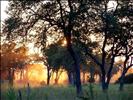
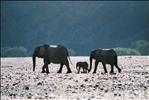
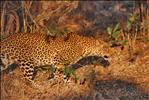


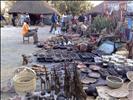
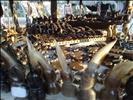







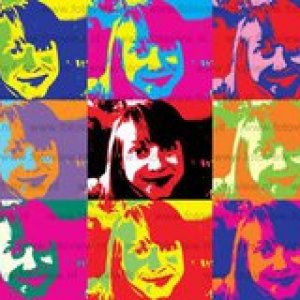











I liked
The rules of etiquette; the suggestion to stay at a rural village and learn about the extreme poverty level these people deal with.I disliked
Nothing